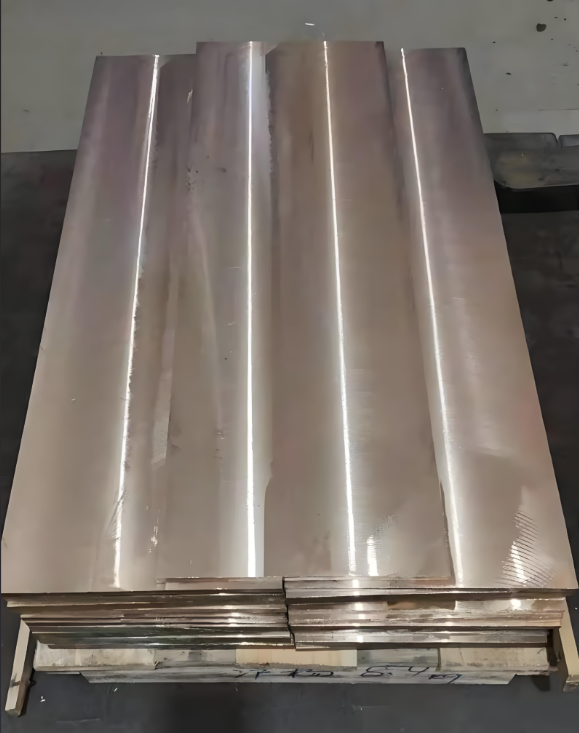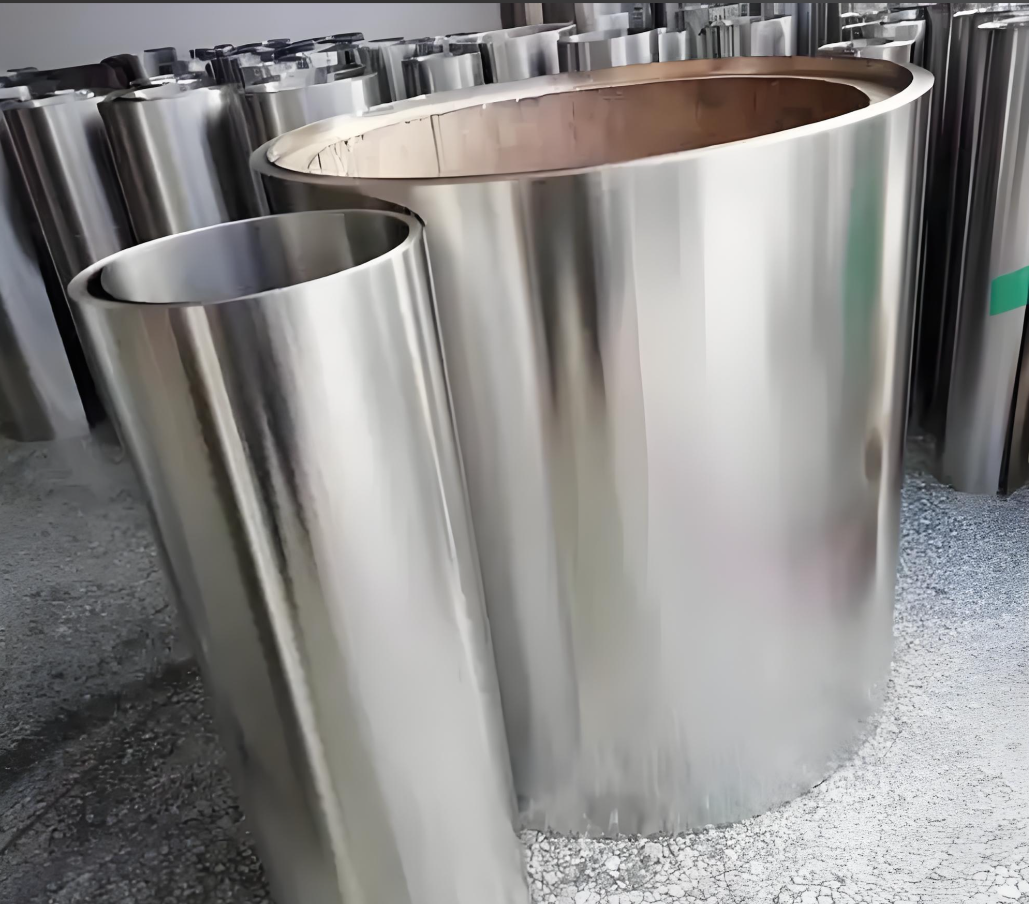ABOUT
What Do Copper And Nickel Make?
Under certain conditions, copper and nickel can be mixed to form a copper-nickel alloy, which possesses unique physical and chemical properties and is widely utilized across various industrial fields.

1. Basic Properties of Copper and Nickel
- Copper: As a common metallic element, copper exhibits excellent electrical and thermal conductivity, making it widely applied in the electrical field (e.g., manufacturing of wires and cables) and construction sector (e.g., pipes and decorative materials). Additionally, copper boasts good ductility and malleability, allowing it to be processed into products of various shapes with ease.
- Nickel: Nickel is a silvery-white metal, with its core advantages lying in high strength and outstanding corrosion resistance. It can resist erosion from air and water at room temperature, and also withstand corrosion from various chemical media (such as weak acids and weak alkalis). Therefore, it is often used in the production of stainless steel (e.g., 304 stainless steel contains approximately 8%-10% nickel) and other high-performance alloys to enhance the durability of materials.
2. Mixability of Copper and Nickel
Copper and nickel can be effectively mixed under specific conditions, with the core process based on the melting and solidification of metals:
- Heating and Melting: After mixing copper and nickel in a preset ratio, heat them to a sufficiently high temperature (the melting point of copper is approximately 1083°C, and that of nickel is around 1455°C; the melting point of the resulting alloy usually falls between the two, depending on the composition ratio), transforming both metals into a liquid state.
- Uniform Mixing: In the liquid state, the atoms of copper and nickel can diffuse freely, forming a uniformly mixed molten metal mixture.
- Cooling and Solidification: Cool the uniform molten mixture slowly (or control the cooling rate according to requirements). The atoms gradually arrange in an orderly manner and eventually solidify to form a copper-nickel alloy.
It is worth noting that copper and nickel also have a certain degree of solubility in the solid state, enabling the formation of a continuous solid solution. This property serves as an important foundation for the stable formation of alloys between the two.
3. Properties of Copper-Nickel Alloys
Copper-nickel alloys combine the advantages of both copper and nickel while also possessing their own unique properties, mainly including:
Good Fatigue Resistance: Under long-term cyclic loads, copper-nickel alloys are not prone to fracture due to fatigue. This property makes them perform well in the manufacturing of high-speed rotating mechanical parts (such as bearings and gears).
Comprehensive Mechanical Properties: Inheriting the high strength of nickel and the ductility of copper, the alloy not only has sufficient strength to withstand loads (such as mechanical stress and pressure) but also can be easily processed into complex-shaped parts through forging, rolling, casting, and other methods.
Excellent Corrosion Resistance: Compared with pure copper, the corrosion resistance of copper-nickel alloys (especially in harsh environments such as seawater, humid air, and industrial waste gas) is significantly improved. For instance, copper-nickel alloys with a nickel content of approximately 30% (e.g., Alloy B10) are commonly used anti-corrosion materials in marine engineering.
Stable Electrical and Thermal Conductivity: Although the electrical and thermal conductivity of copper-nickel alloys is slightly lower than that of pure copper, they still maintain a relatively high level. Moreover, their performance is less affected by temperature changes, making them suitable for scenarios requiring high stability of electrical conductivity (e.g., precision resistance components).

4. Influence of Mixing Conditions on Alloy Properties
The mixing conditions of copper and nickel (especially the composition ratio and preparation process parameters) have a significant impact on the properties of the final alloy, which is specifically reflected in the following aspects:
- Influence of Copper-Nickel Ratio
- Hardness and Strength: With the increase in nickel content, the hardness and strength of the alloy generally show an upward trend. For example, the Brinell hardness of pure copper is approximately 35HB, that of copper-nickel alloy with 10% nickel can increase to about 60HB, and when the nickel content reaches 30%, it further rises to around 80HB.
- Corrosion Resistance: Within a certain range (nickel content: 0%-45%), the higher the nickel content, the stronger the corrosion resistance of the alloy (especially in seawater, humid air, and industrial waste gas). However, when the nickel content exceeds 45%, the increasing trend of corrosion resistance gradually slows down. A typical example is the 70 30 copper nickel alloy (containing 70% copper and 30% nickel), which demonstrates exceptional resistance to seawater corrosion, making it a preferred material in offshore oil platforms and shipbuilding.
- Electrical and Thermal Conductivity: As the nickel content increases, the electrical and thermal conductivity of the alloy gradually decrease. For example, the electrical conductivity of pure copper is approximately 100% IACS (International Annealed Copper Standard), that of copper-nickel alloy with 10% nickel is about 20% IACS, and when the nickel content reaches 50%, it drops to around 7% IACS.
- Influence of Preparation Process Conditions
- Melting Temperature: If the melting temperature is too low, copper and nickel may not be completely melted or mixed uniformly, resulting in alloy composition segregation (inconsistent local composition) and affecting performance stability. If the temperature is too high, it may cause metal oxidation and burning loss, reducing the alloy purity.
- Cooling Rate: Rapid cooling (e.g., water cooling) can refine the alloy grains, improving hardness and strength, but may increase internal stress. Slow cooling (e.g., furnace cooling) helps with the uniform growth of grains, reducing internal stress and enhancing the alloy’s plasticity and toughness. These process parameters are also key factors that copper nickel alloy suppliers need to strictly control during production to ensure the consistency of product quality.
5. Applications of Copper-Nickel Alloys
Relying on their excellent comprehensive properties, copper-nickel alloys are widely used in various industrial fields, with main application scenarios including:
- Electrical Field: Utilizing their stable electrical conductivity, they are used to manufacture precision resistors, thermocouples, motor commutators, and other components. Some copper-nickel alloys with low nickel content (e.g., 5%-10% nickel) are also used in the production of high-reliability wires and cables, especially suitable for environments with high requirements for electrical conductivity stability.
- Mechanical Field: Leveraging their high strength, fatigue resistance, and wear resistance, they are used to produce mechanical parts such as bearings, gears, valve spindles, and precision molds, which are commonly used in machine tools, automobiles, ships, and other equipment.
- Chemical and Marine Engineering Fields: Due to their excellent corrosion resistance, copper-nickel alloys are used to manufacture chemical reactors, conveying pipelines, heat exchangers, and other equipment. In marine engineering, they are also used to produce ship propellers, seawater desalination equipment, offshore platform structural parts, and copper nickel alloy tubing (a key product in marine pipelines, which can effectively resist seawater corrosion and extend the service life of marine facilities).
When purchasing copper-nickel alloy products (such as copper nickel alloy tubing or 70 30 copper nickel alloy), factors such as copper nickel alloy price (which is affected by raw material costs, production processes, and product specifications), the technical strength of suppliers, and after-sales service should be comprehensively considered to select cost-effective products that meet actual application needs.
In summary, through reasonable mixing and preparation processes, copper and nickel can form copper-nickel alloys with excellent performance. Relying on their unique advantages, these alloys have become key materials connecting the electrical, mechanical, chemical, and marine engineering fields, and hold an irreplaceable position in modern industrial production.
We Exist to Make Your Projects Successful
Fill out the form below and someone from our team will be in touch with you!
FOTMA Delivers Professional Ultra-Dense Solutions, Lighter on Cost, Heavier on Performance.
Hubei Fotma Machinery Co. Ltd.
Wechat / Whatsapp / Mobile:
+86 13995656368, +86 13907199894
Tel: +86-27-67845266
Email: bunny@fotma.com, export@fotma.com
Address: Guanggu Avenue 52#, Hongshan, Wuhan,
Hubei province, P.R.China. 430074